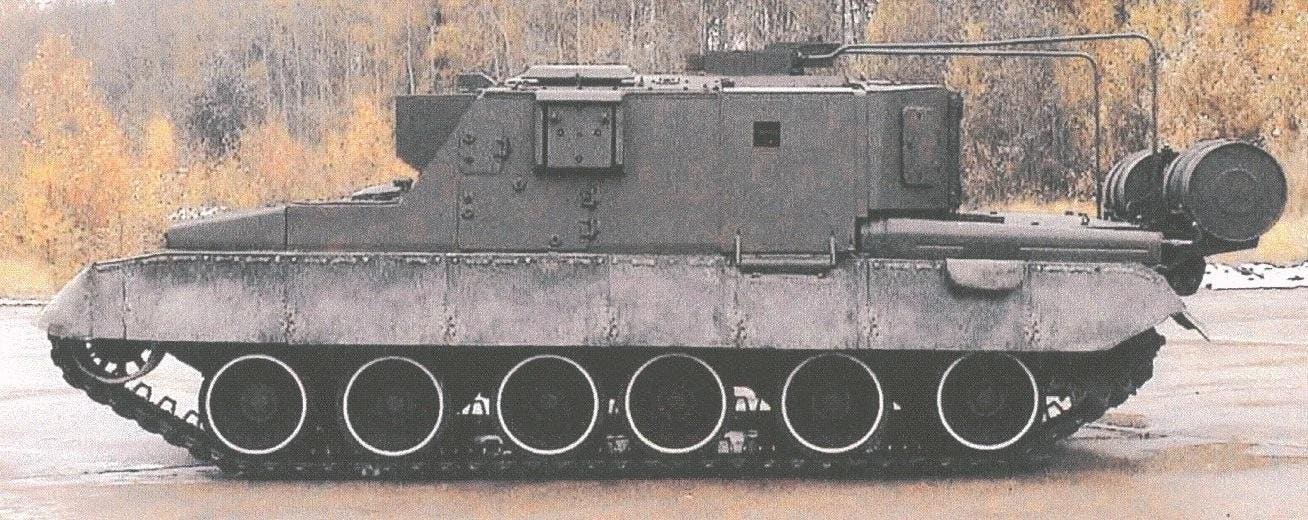In the late 1970s, Soviet authorities asked the Kirovsky Design Bureau in Saint Petersburg to develop a nuclear reconnaissance and command vehicle.
And not just any nuclear reconnaissance and command vehicle, but the best protected, most comfortable nuke vehicle imaginable. A sealed, self-contained and thickly armored turretless tank with remote cameras and its own oxygen supply.
The result was the Ladoga. Kirovsky produced just a handful of the tracked vehicles—perhaps four or five. One spent some time in the fallout zone around the nuclear power plant in Chernobyl following the plant’s deadly 1986 meltdown. Aside from another that landed in a museum, the Ladogas then … disappeared.
Until recently. In March, a Ukrainian drone spotted and struck a Ladoga rolling toward Ukrainian lines near the Kreminna Forest in eastern Ukraine. And earlier this week, the Ukrainians hit a second Ladoga, setting it ablaze.
It’s no secret that the Kremlin is struggling to generate enough combat vehicles—either through new production or by fetching older vehicles from long-term storage—to make good staggering losses (16,000 vehicles and counting) along the 700-mile front line of Russia’s 28-month wider war on Ukraine.
That gap between the newly generated vehicles—500 or 600 tanks a year plus a thousand or so fighting vehicles—and annual losses that average 1,300 tanks and 1,700 fighting vehicles helps to explain why some very strange vehicles have showed up along the front line.
Perhaps most notably, golf-carts, dirt bikes and turtle tanks.
Compared to a golf-cart or dirt bike, a Ladoga is much better-suited for mechanized warfare. It combines the armored hull of a T-80 tank with a 1,250-horespower gas-turbine engine and a voluminous crew compartment seating around four in padded armchairs.
The Ladoga has a mast-mounted television camera and a full suite of radios that would have allowed the vehicle to work in a doomsday command role. Imagine Soviet leaders speeding to safety inside of a Ladoga, directing their own nuclear forces as NATO nukes rain down.
Now imagine some Russian colonel commanding his battalion from a Ladoga’s cozy interior during an attack on Ukrainian forces around Kreminna.
The tiny force of Ladogas got a workout around Chernobyl but never performed its primary role in an atomic apocalypse. Surely no one at Kirovsky imagined aged Ladogas eventually finding their way to the front line of a non-nuclear war in 2024.
But then, it’s hard to imagine the engineers in Saint Petersburg 50 years ago could imagine Russia losing 16,000 armored vehicles in a little over two years in a war with, of all countries, an independent and NATO-aligned Ukraine.
There might be two or three Ladogas left, including the one in a museum. It remains to be seen whether they turn up in Ukraine—and whether they survive.
Sources:
1. Andrew Perpetua: https://twitter.com/AndrewPerpetua/status/1772650520743645222
2. Jakub Janovksy: https://x.com/OSINTua/status/1805682646980379109
3. Oryx: https://www.oryxspioenkop.com/2022/02/attack-on-europe-documenting-equipment.html
4. Topwar: https://en.topwar.ru/24858-ot-peredvizhnoy-aes-do-yadernogo-razvedchika-ladoga.html
Read the full article here





